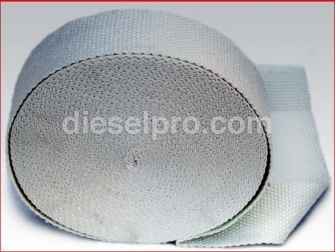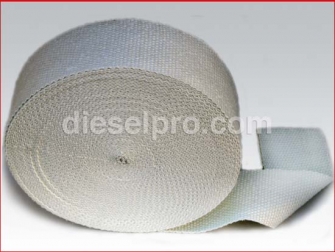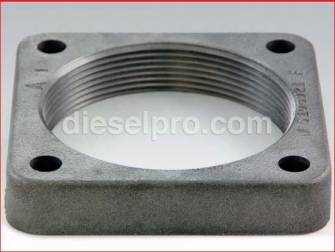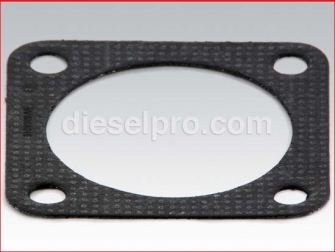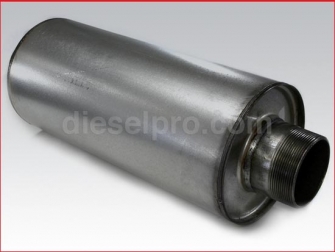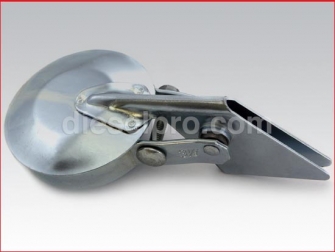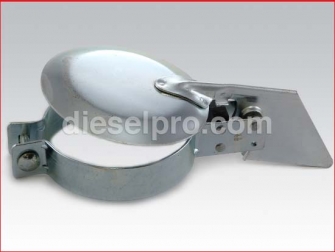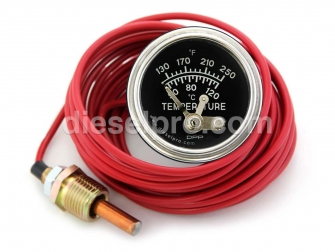Cummins QSB 6.7 Parts - Exhaust Section
 Loading...
Loading... Cummins QSB 6.7 Exhaust System Components
The Cummins QSB 6.7L engine’s exhaust system plays a critical role in maintaining optimal performance, reducing emissions, and protecting nearby components from excessive heat. Whether you’re operating in a demanding marine environment or an industrial application, having a properly functioning exhaust system ensures both engine efficiency and operator safety. At Diesel Pro Power—trusted by over 40,000 satisfied customers—you’ll find a full range of exhaust components for the QSB 6.7, including gaskets, insulation materials, flanges, mufflers, and protective caps.
Below you’ll find a detailed overview of the available parts and their functions within the exhaust system.
Intake Manifold Cover Gasket
The intake manifold cover gasket seals the intake manifold cover to prevent air leaks and maintain correct airflow into the combustion chambers. Even though it is part of the intake side, it works closely with the exhaust system to maintain correct pressure balance. A worn or damaged gasket can lead to reduced power, increased fuel consumption, and higher emissions.
-
Designed for direct fit on Cummins QSB 6.7L engines
-
Heat-resistant material to withstand high operating temperatures
-
Helps maintain proper manifold pressure for efficient combustion
Manifold Insulation Tape – 3" and 4" Widths
Manifold insulation tape helps protect engine bay components from the extreme heat generated by the exhaust manifold. It also improves safety for operators and reduces heat transfer to nearby wiring, hoses, and sensors.
Available sizes:
-
3 inches wide x 100 feet long – ideal for tight bends and smaller manifold surfaces
-
4 inches wide x 100 feet long – suitable for broader manifold sections and straight runs
Both options feature a 1/8-inch thickness, offering effective thermal protection while maintaining flexibility for installation.
Flange for Industrial Exhaust Manifold – 4" Inside Diameter
A flange connects the exhaust manifold to downstream components such as piping or mufflers. On the Cummins QSB 6.7, this 4-inch inside diameter flange is machined to precise tolerances to ensure a secure, leak-free connection.
-
Designed for industrial and marine exhaust configurations
-
Heavy-duty construction to withstand high temperatures and vibration
-
Compatible with matching 4-inch manifold gaskets for optimal sealing
Gasket for Manifold Flange – 4" Inside Diameter
A manifold flange gasket is a critical sealing component that prevents exhaust gas leaks where the manifold joins to the exhaust piping or muffler.
-
Fits 4-inch inside diameter flanges
-
Manufactured from heat-resistant composite material
-
Designed for marine and industrial exhaust environments
Muffler for Industrial and Marine Applications – 4" NPT
The muffler is essential for reducing exhaust noise and backpressure in the QSB 6.7 engine. This version features a 4-inch National Pipe Thread (NPT) inlet and outlet, ensuring a secure connection with industrial-grade exhaust piping.
-
Reduces noise output without restricting exhaust flow
-
Built to withstand prolonged exposure to heat and corrosive marine conditions
-
Suitable for both stationary industrial engines and marine propulsion systems
Muffler End Caps – Multiple Sizes
Muffler end caps protect the exhaust system from debris, water ingress, and contamination during downtime or storage. They are especially important in marine applications where saltwater exposure can quickly lead to corrosion.
Available diameters:
-
3 inches – Pipe Outside Diameter: 2.99" (7.59 cm)
-
3.5 inches – Outside Diameter: 3.50" (8.89 cm)
-
4.5 inches – Outside Diameter: 4.49" (11.40 cm)
-
5 inches – Outside Diameter: 5" (12.7 cm)
Features:
-
Durable construction for extended life in harsh environments
-
Easy to install and remove for maintenance access
-
Protects against moisture, dirt, and accidental impacts
Maintaining Your Cummins QSB 6.7 Exhaust System
Routine inspection and maintenance of the exhaust system is essential for preventing costly downtime and ensuring compliance with emissions regulations. Here are a few best practices:
-
Check gaskets regularly for signs of cracking, warping, or leaks.
-
Inspect insulation tape for fraying or damage, replacing as necessary to maintain thermal protection.
-
Tighten flanges and bolts to prevent exhaust leaks.
-
Clean or replace muffler components if excessive soot buildup occurs.
-
Protect open exhaust ports with properly sized end caps when the engine is not in use.



 Free US Calls: 1-888-433-4735
Free US Calls: 1-888-433-4735 International: 305-545-5588
International: 305-545-5588







